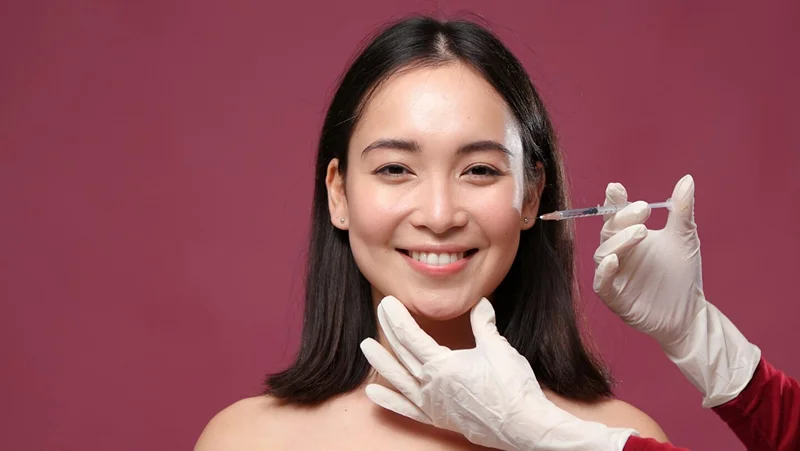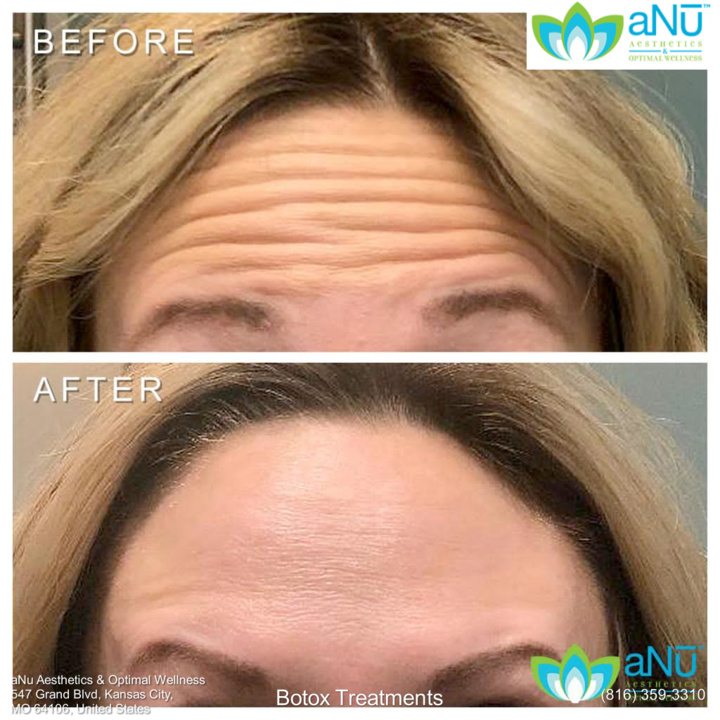How Many Units of Botox Injections Should I Get for a Typical Facial Treatment?

It might be difficult to estimate how much Botox you would require when you first start exploring cosmetic treatments. While the appropriate number of Botox injections can only be decided in consultation with a licensed medical practitioner, there are some important FDA-approved guidelines for the number of Botox units that are standard for most practices.
So how many units of Botox injections should a patient get for a typical facial treatment? Board-certified practitioners may use 4 to 50 units of botulinum toxin, depending on the patient’s aesthetic goals and needs. Considerations must be taken into account at every stage of the procedure: the chin typically requires 4 units while the masseters may require up to 50 units.
With just a few simple injections, our providers can erase your wrinkles and fine lines in no time with Botox. Call us today to book your appointment.
Average Botox Units by Facial Part
As every person’s face is unique, so are their aesthetic goals. As a result, the number of Botox injections required or preferred tends to differ from patient to patient. However, if you want to get a sense of how much Botox most individuals get to treat specific regions, you can check the average numbers for each treatment site. Here are the average Botox units for the various parts of the face:
| Crow’s Feet | 5 to 15 Units Per Side |
| Brow Lift | 5 to 10 Units |
| Chin | 4 to 8 Units |
| Forehead Lines | 10 to 20 Units |
| Neck Bands | 25 to 50 Units |
| Bunny Lines (Lines on the Nose) | 5 to 10 Units |
| Smile Lift (Corners of the Mouth) | 4 to 6 Units |
| Frown Lines / Glabellar Lines / 11 Lines | 20 to 30 Units |
| Masseters (Cheekbone and Jaw Muscles) | 25 to 50 Units Per Side |
Forehead
The most common use of Botox is to treat wrinkles on the forehead. The neurotoxic injections serve to prevent the creation of new fine lines and wrinkles all over the forehead while also keeping the skin smooth and firm. Although each patient’s treatment plan is unique, your dermatologist will most likely start with the following recommendations:
Injection Sites
On the forehead, there are 5 primary injection sites: 2 beneath the hairline, 2 above the temples, and 1 in the middle of the forehead. Because everyone’s anatomy is a little different, it’s crucial to see a qualified and experienced physician who can examine your facial movement and understand precisely where injections are needed.
Dosage
The manufacturer of Botox Cosmetic recommends 4 units for each injection location, for a total of 20 units. Most dermatologists claim they provide between 10 and 50 total units for each patient, depending on their needs and treatment history.
Frequency of Treatment
Your dermatologist will likely administer a lesser dosage of Botox, with 1 to 2 units per injection site, during the initial application to assess your response. They’ll want you to come back in 2 to 3 months for an evaluation and retreatment. Maintenance sessions are strongly advised every 3 to 4 months once you’ve achieved the desired results.
Between the Eyes
Another popular Botox application site is the lines between the eyes, often known as elevens or frown lines. These lines can be rather deep, and Botox is an excellent way to prevent wrinkles from forming in the first place or slowing their progression.
As a result, your dermatologist may propose a variety of cosmetic dermatology treatments to reduce the visibility of existing wrinkles between the brows, followed by Botox to prevent new lines from forming. The treatment plan for wrinkles between the eyes varies from person to person, but a typical Botox treatment plan for wrinkles between the eyes usually includes:
Injection Sites
Botox should be injected in 5 locations along the upper brow and in between the eyebrows. Imagine a V-shaped shape over your eyes, with the center between your brows. Everyone’s anatomy is unique. A licensed practitioner will observe your facial movement to determine where injections should be administered.
Dosage
It is recommended to use up to 5 units per injection site for a total of 25 units. However, dermatologists claim they administer between 20 and 50 total units in this area. The dosage for this area of the face may depend on the severity of the patient’s wrinkles and lines.
Frequency of Treatment
To identify the appropriate amount, it’s usually best to start with fewer units, just like the forehead. Retreatment sessions are usually arranged every 3 to 4 months once you and your dermatologist have determined the optimal quantity of units.
Corners of the Eyes
While your dermatologist will avoid using too much neurotoxin around the eyes because of the sensitive skin, deep creases and wrinkles may require a more aggressive treatment. It’s a delicate balancing act, and identifying the appropriate dosage of units for Botox treatment for the area around the eyes is crucial.
Your dermatologist may recommend some low-dose trial treatments to ensure you get the results you want safely. Each person’s Botox treatment plan for crow’s feet will be unique, however a general treatment plan might include:
Injection Sites
To treat crow’s feet, 6 injection sites are advised. An injection will be administered above and below the eye, with a third injection midway between the 2 injection sites. Each person’s anatomy is unique, and injection placement will reflect this.
Dosage
The normal dose of Botox between the brows is 5 units every injection, for a total of 25, however dermatologists may use anywhere from 20 to 50 units, depending on the patient’s circumstances and response to the treatment.
Frequency of Treatment
Similarly, about 2 months following your initial Botox treatment, your dermatologist may arrange a return appointment to assess the outcomes of the treatment and make the necessary adjustments to your dosage and continuing maintenance plan. Most dermatologists recommend retreatment 3 or 4 months after you attain the desired results.
Factors That Determine the Exact Amount of Botox Units Used
Each patient is different when it comes to Botox injections procedures. The quantity of Botox units necessary for each patient is determined on the size, strength, and location of the muscle, among other criteria. The strength of your facial muscles, particularly your forehead muscles, determines how many units you’ll require.
Facial Muscle Strength
The strength of a person’s muscles is one factor that influences how many units of Botox they will require. In general, the strength of our muscles differs. The forehead muscles, for example, are larger muscles that require more units for each person.
However, the strength of your muscles can influence how much Botox injections will be administered. You’ll require more Botox if your muscles are stronger than the average. Men’s facial muscles are substantially stronger than women’s, so they require more units.
Botox Treatment History
Botox weakens muscles over time, so its effects may remain longer. The effects of Botox, no matter how long you’ve been getting it or how many units you’ve injected, will ultimately wear off. Botox’s effects last on average 4 months, but if you’ve been getting it for years, your benefits could last up to 6 months. If you’re inexperienced with Botox, a good rule of thumb is to begin with as few units as possible and gradually increase doses to attain the best outcomes.
Frequency of Facial Expression
The use of facial muscles varies from person to person, as does the number of muscles that you use. As a result, assessing how many Botox units are required must be done on a case by case basis. However, depending on how frequently facial muscles are used, some basic assumptions can be made. Over time, repetitive face movements may weaken your muscles, requiring more Botox units.
Desired Results
Your own Botox treatment goals will have a significant impact on how much Botox you’ll require. More Botox will be required if you wish to treat more parts of your face. If you want to treat crow’s feet, forehead lines, neck bands, or bunny lines, you’ll need more units than if you just want to treat crow’s feet. Depending on whether you want more dramatic or subtle results, less or more Botox will be administered accordingly.
A patient who wants to eliminate every wrinkle from their face and entirely prevent their muscles movement will require more Botox than an individual who only wants to smooth out a few lines, gradually diminish forehead wrinkles, receive a natural looking brow lift, or undergo preventative Botox. As a result, the number of Botox units you’ll require is mostly determined by your specific treatment goals.
Metabolism
Many people are unaware that their metabolism can alter the effectiveness of Botox injections. The substances we put in our bodies, including botulinum toxin, are processed by our metabolism. People with faster metabolic rates require more Botox treatments since Botox is broken down more quickly by their bodies.
Men also have higher metabolisms than women on average, similar to muscle strength. As a result, many men discover that they require more Botox units. For a more effective treatment, men may also need more botox injections sessions from their medical practitioner.
What to Expect After Botox Facial Treatments
Botox injections are an incredibly simple procedure that may be done repeatedly and safely. The complete procedure normally takes no more than 10 minutes. The benefits of a single Botox treatment are expected to last 3 to 4 months. Following a Botox treatment, your actions and lifestyle can boost or decrease the wrinkle-removing effectiveness.
Botox Injections: How Long Do the Effects Last?
The Botox treatment should yield results in at least 10 days for the areas treated. Wrinkles don’t vanish, but they do become less visible. Deeper lines will be less visible after administering the injections, while finer lines will even out entirely. Your muscle activity will return to normal over time, and the Botox will start to wear off. Botox can last anywhere from 3 to 6 months, with 4 months being the most common.
Aftercare Tips to Promote Efficacy and Longevity
Botox aftercare is designed to help you get the most out of your treatment. It can also help to prevent bruising and the migration of the botulinum toxin to other parts of the face. On the day of your Botox treatment, it’s advisable to:
- Exercise and massage your face gently
- Rest for the remainder of the day
- Keep your heart rate normal
- Avoid touching, kneading, or applying physical pressure to the affected area
- Allow the treated area to rest
Schedule Botox Treatments Consultation at aNu Aesthetics

The most essential aspect of Botox injection procedures is that you trust that your doctor will administer the right dosage. We guarantee that at aNu Aesthetics, you’ll be receiving utmost patient care, coupled with the best cosmetic treatment plans in line with your aesthetic goals.
With our selection of cosmetic treatments and wellness services, aNu Aesthetics promotes beauty and self-care as the premier aesthetics and wellness spa. Our patients are in good hands with our board-certified physicians and staff, who are dedicated to providing high-quality care. To know more about how we may assist you, schedule an appointment with one of our doctors today.
With just a few simple injections, our providers can erase your wrinkles and fine lines in no time with Botox. Call us today to book your appointment.